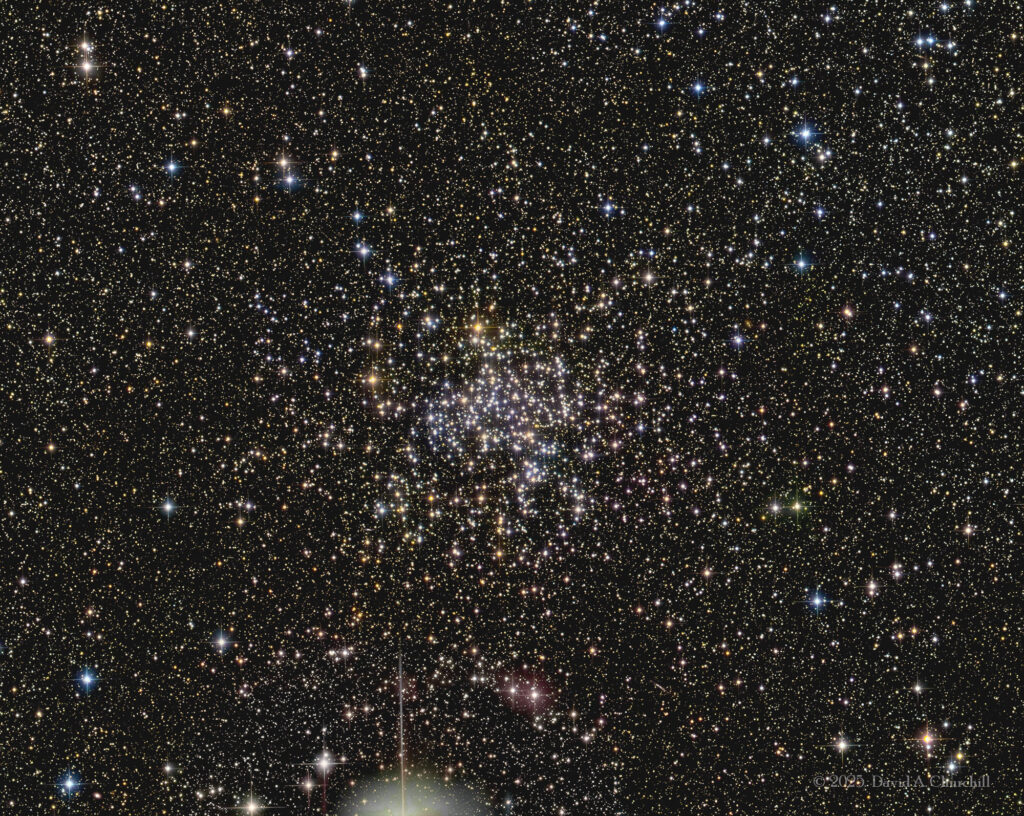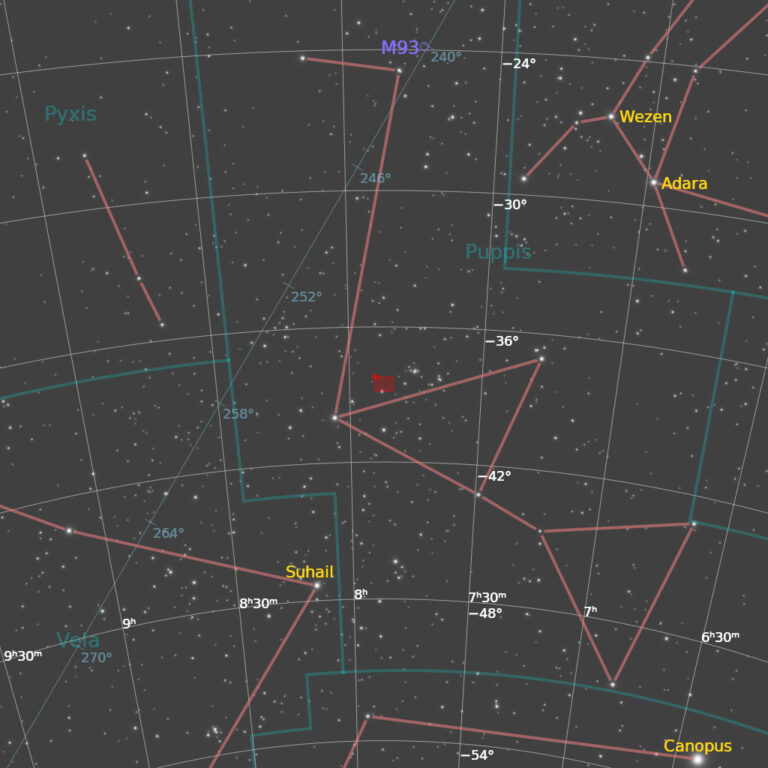NGC 2477 (Caldwell 71)
Termite Hole Cluster. Open Cluster, Puppis
- Description
- Technical
- Links
NGC 2477 (also known as Caldwell 71 or the Termite Hole Cluster) is an open cluster in the constellation Puppis. It contains about 300 stars, and was discovered by Abbé Lacaille in 1751. The cluster’s age has been estimated at 700 million years.
NGC 2477 is a stunning cluster, almost as extensive in the sky as the full moon. It has been called “one of the top open clusters in the sky”, like a highly resolved globular cluster without the dense center characteristic of globular clusters. Burnham notes that several observers have remarked on its richness, and that although it is smaller than M46 (also an open cluster in Puppis), it is richer and more compact. Burnham cites several published distances, ranging from 700 parsecs (2,300 ly) to 1,900 parsecs (6,200 ly), where “ly” is the abbreviation for light year.
NGC 2477 is a stunning cluster, almost as extensive in the sky as the full moon. It has been called “one of the top open clusters in the sky”, like a highly resolved globular cluster without the dense center characteristic of globular clusters. Burnham notes that several observers have remarked on its richness, and that although it is smaller than M46 (also an open cluster in Puppis), it is richer and more compact. Burnham cites several published distances, ranging from 700 parsecs (2,300 ly) to 1,900 parsecs (6,200 ly), where “ly” is the abbreviation for light year.
Telescope: Planewave CDK17 (FR) f4.5
Mount: Astro Physics 1600GTO
Camera: QHY16200A/ Integral FW
Guider: Agena Starguide II / ZWO ASI178MM
Filters: Astronomik 36mm LRGB
L: 80×5 mins = 400 mins, R: 24×5 mins = 120 mins, G: 24×5 mins = 120 mins, B: 24×5 mins = 120 mins
Total Imaging Time: 12h 40m
Data Imaged remotely on 4 nights during February, 2025.
Imaged from Observatorio El Sauce, Chile, in partnership with Fred Espenak.
Data acquisition & Processing by David Churchill.
None


